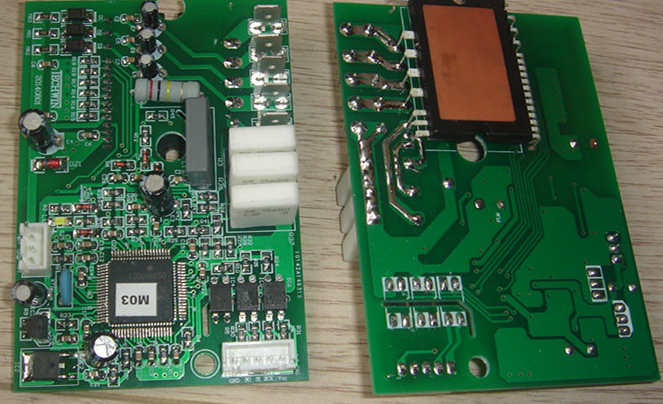This is how your PCB board was copied!
Speaking of PCB copy board, you may be ashamed or angry. Whether you copy the board or you are copied by someone else, this specific article on the process of PCB copying is useful to you.
You can see whether your copying process is "professional", you can also think about how to prevent others from copying the board for these processes... The specific process of PCB copying also includes the double-sided copying method.
To put it simply, the technical completion process of the PCB copy board is to scan the circuit board to be copied, record the specific location of the equipment, and then remove the equipment to make a bill of materials (BOM) and arrange the purchase of materials. The scanned picture is processed by the copy board software and restored to a PCB board drawing file, and then the PCB file is sent to the PCB plate making factory to make the board. After the board is made, the purchased components are soldered to the made PCB board, and then passed through the circuit board Just test and debug.
The specific process of PCB copy board
Get a PCB board, first record the model, parameters, and orientation of all vital parts on the paper, especially the direction of the diode, the tertiary tube, and the direction of the IC gap. It is best to use a digital camera to take two photos of the orientation of the vital parts. The current PCB circuit boards are becoming more and more high-end. The diode transistors on the above are a little unnoticeable.

2. Disassemble the multi-layer board copy board of the cutting device, and remove the tin in the PAD hole. Clean the PCB with alcohol and put it into the scanner. When the scanner scans, you need to raise the scanned pixels slightly to get a clearer picture. Then lightly polish the top and bottom layers with water gauze until the copper film is shiny, put them in the scanner, start PHOTOSHOP, and scan the two layers separately in color. Note that the PCB must be placed horizontally and vertically in the scanner, otherwise the scanned image cannot be used.
3. Adjust the contrast and brightness of the canvas so that the part with copper film and the part without copper film have a strong contrast, and then turn the second image into a non-color, and check whether the lines are clear. If it is not clear, repeat the process. If it is clear, save the picture as non-BMP format files TOP.BMP and BOT.BMP. If there is a problem with the picture, you can also use PHOTOSHOP to repair and correct it.
4. Convert the two BMP format files to PROTEL format files, and transfer them into two layers in PROTEL. For example, the orientations of PAD and VIA that have passed through the two layers basically coincide, indicating that the previous processes have been done well, if there is a deviation, Repeat the third step. Therefore, PCB copying is a job that requires patience. A small problem will affect the quality and the degree of matching after copying.
5. Convert the BMP of the TOP layer to TOP.PCB, pay attention to the conversion to the SILK layer, which is the yellow layer, and then you can trace the line on the TOP layer, and place the equipment according to the drawing in the second step. Delete the SILK layer after drawing. Keep repeating the layers that know everything is drawn.
6. Import TOP.PCB and BOT.PCB in PROTEL and combine them into one picture and it will be OK.
7. Use a laser printer to print the TOP LAYER and BOTTOM LAYER separately on the transparent film (1:1 ratio), put the film on the PCB, and compare whether there is any error. If it is correct, you are done. A copy board identical to the original board was born, but this was only half done. A test is also required to test whether the electronic technology function of the copy board is the same as the original board. If it is the same, it is really done.
Remarks: If it is a multilayer board, you need to carefully polish the inner layer, and repeat the process of copying the board from the third to the fifth step. Of course, the naming of the graphics is also different. It depends on the number of layers. Generally, double-sided board copying requires It is much simpler than the multi-layer board, and the multi-layer copy board simply presents a situation where the alignment is prohibited. Therefore, the multi-layer board copy board must be particularly careful and careful (the internal vias and non-vias are simply problems).